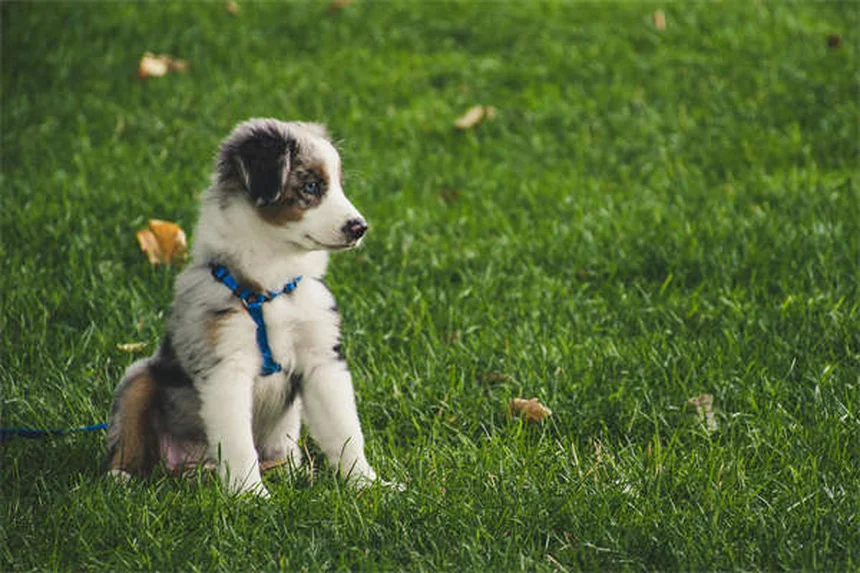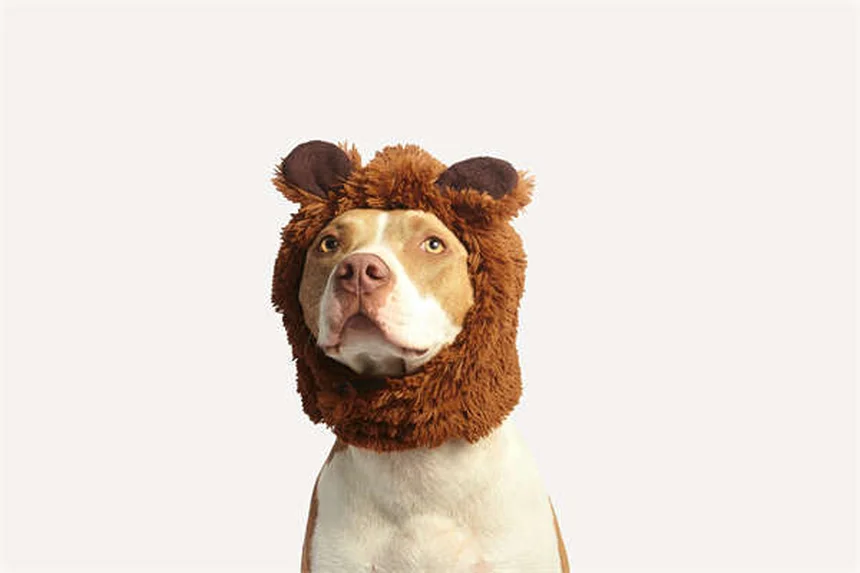Advertisement
What is that floppy belly on your cat? The answer: It's called a primordial pouch, and it's completely normal! Every cat has this unique feature - from your housecat to lions in the wild. I used to worry about my tabby Max's swaying belly until my vet explained this fascinating feline characteristic. The primordial pouch is that loose flap of skin between your cat's back legs that makes them look like they're wearing a tiny furry apron. While scientists aren't 100% sure why cats have them, they believe it might help with protection during fights, allow for greater flexibility, or even store extra food. The coolest part? Your cat's primordial pouch is as unique as their personality - some are barely noticeable while others have major sway action!
E.g. :Hamster Pneumonia: 5 Warning Signs Every Owner Should Know
- 1、The Mysterious Floppy Belly: Understanding Your Cat's Primordial Pouch
- 2、When Does the Pouch Appear?
- 3、Is It Fat or Just Floppy?
- 4、The Science Behind Your Cat's Wiggly Belly
- 5、Pouch Problems: When to Worry
- 6、Fun Pouch Facts You've Never Heard
- 7、FAQs
The Mysterious Floppy Belly: Understanding Your Cat's Primordial Pouch
Ever noticed that adorable little belly swing when your cat struts across the room? That's not just extra skin - it's one of nature's most fascinating feline features! Let's dive into everything you need to know about this quirky cat characteristic.
Spotting the Primordial Pouch
Here's a fun experiment: next time your cat stands up, take a side view. See that loose flap of skin swaying between their back legs? That's their primordial pouch - and it's completely normal!
I used to think my tabby Max was just carrying some extra weight until my vet explained this unique feature. All cats have it, from your housecat to lions in the wild. Some pouches are more noticeable than others - kind of like how some humans have more prominent dimples!
Why Mother Nature Gave Cats This Feature
Scientists have several theories about this feline flab:
- Built-in armor: Protects vital organs during cat fights (we all know how dramatic those can get!)
- Super stretch: Allows for those incredible mid-air twists when chasing laser pointers
- Food storage: Helps when your cat acts like they've never eaten before (even though you just fed them 10 minutes ago)
But here's the funny thing - it might not actually do anything useful today! Our housecats might just be carrying this feature as an evolutionary souvenir from their wild ancestors.
When Does the Pouch Appear?
 Photos provided by pixabay
Photos provided by pixabay
The Growing Pouch Timeline
Kittens are born without this signature sway. The pouch develops as they grow, usually becoming noticeable around 6-12 months. My neighbor's Maine Coon didn't show his impressive pouch until he was nearly 2!
Think of it like human baby teeth - they come in when they're ready, and every cat's timeline is slightly different.
Pouch Size Variations
Ever wonder why some cats look like they're wearing a furry apron while others barely show any pouch? Here's the scoop:
| Breed | Typical Pouch Size |
|---|---|
| Thai Cat | Very small (barely noticeable) |
| Pixiebob | Large (major sway action) |
| Domestic Shorthair | Medium (your average belly flap) |
And just like humans, cats' skin loses elasticity with age. So don't be surprised if your senior kitty's pouch gets a bit... droopier over time!
Is It Fat or Just Floppy?
The Great Pouch vs. Fat Debate
Here's a question many cat owners struggle with: "Is my cat overweight or just pouch-y?" Let me break it down for you:
The primordial pouch is loose and jiggly, located specifically between the back legs. Fat distributes more evenly around the body. A good test? Try the "rib check" - you should be able to feel (but not see) your cat's ribs under a thin layer of fat.
 Photos provided by pixabay
Photos provided by pixabay
The Growing Pouch Timeline
While dieting won't shrink the pouch (it's here to stay!), maintaining a healthy weight is crucial. Here's what I've learned from my vet:
- Play with your cat for at least 15 minutes daily (feather toys work wonders)
- Measure their food instead of free-feeding
- Schedule regular vet check-ups
Remember - that adorable belly swing is part of what makes your cat unique! Whether it's big, small, or somewhere in between, it's just one more reason to love our feline friends.
Pro tip: Next time your cat rolls over for belly rubs (if they allow such liberties!), take a moment to appreciate this evolutionary marvel. Just maybe keep your face out of swiping range!
The Science Behind Your Cat's Wiggly Belly
Evolutionary Advantages We Rarely Consider
Did you know that primordial pouches might have helped ancient cats survive extreme weather? That loose skin acts like natural insulation, keeping desert-dwelling ancestors warm at night and cool during scorching days. Modern housecats may not need this feature anymore, but their DNA hasn't gotten the memo!
Here's something fascinating - big cats like lions and tigers have even more pronounced pouches than our domestic kitties. Next time you watch a nature documentary, check out how their bellies swing when they run. It's not just for show - that extra skin allows for greater stride length when chasing prey across the savanna. Your living room may not require 30mph sprints after toy mice, but your cat's body is still built for the hunt!
The Pouch's Role in Feline Communication
You've probably seen your cat do the "elevator butt" pose when you scratch near their tail. But have you noticed how the primordial pouch moves during different moods?
When relaxed, the pouch hangs loose like a hammock. During play or hunting, it tightens up against the body. And when startled? That skin can puff up dramatically, making your cat appear larger to potential threats. It's like nature's built-in special effects system!
Pouch Problems: When to Worry
 Photos provided by pixabay
Photos provided by pixabay
The Growing Pouch Timeline
While usually harmless, some conditions can make the belly area appear abnormal. Hernias often occur near the pouch location and feel firmer than normal loose skin. If you notice sudden swelling, tenderness, or changes in your cat's behavior, it's vet time.
My friend's cat Whiskers developed a lump that turned out to be an abscess - easily treated with antibiotics. The moral? Know what's normal for your cat so you can spot when something's off. Regular belly rubs (if permitted) double as health checks!
The Obesity Epidemic in Housecats
Did you know 60% of American cats are overweight? Here's a scary comparison:
| Weight Category | Health Risks | Life Expectancy Impact |
|---|---|---|
| Ideal Weight | Minimal | Full lifespan (15-20 years) |
| Overweight | Diabetes, joint issues | Reduced by 2-5 years |
| Obese | Heart disease, cancer risk | Reduced by 5+ years |
But here's the good news - you can help! Puzzle feeders turn mealtime into exercise, and laser pointers provide cardio without stressing joints. My cat goes nuts for crinkly balls - cheap entertainment that keeps her moving!
Fun Pouch Facts You've Never Heard
Cultural Significance Around the World
In ancient Egypt, cats with prominent pouches were considered especially sacred. Temple carvings often exaggerated this feature as a sign of divine favor. Today in Japan, the "nekobukuro" (cat pouch) appears in manga as an adorable character trait.
Ever seen those viral videos of cats whose pouches swing dramatically when they run? There's actually a Japanese term for that - "nekoroke" means "the way a cat's belly shakes when moving." Who knew there was a word for such a specific phenomenon?
The Pouch in Cat Shows and Breeding
Believe it or not, some breed standards actually mention the primordial pouch! Pixiebobs are expected to have noticeable pouches, while Siamese cats should have minimal loose skin. Judges at cat shows will gently feel for proper pouch development in certain breeds.
Here's a funny thought - if cat beauty pageants had swimsuit competitions, the pouch would be a major scoring category! But seriously, responsible breeders never prioritize appearance over health. A good pouch is a healthy pouch, no matter its size.
So next time your cat does that hilarious belly flop onto your keyboard, take a moment to appreciate millions of years of evolution at work. That wiggly wonder is part of what makes your feline friend so perfectly, wonderfully cat-like!
E.g. :What Is a Cat's Primordial Pouch? | PetMD
FAQs
Q: What exactly is a cat's primordial pouch?
A: A cat's primordial pouch is that adorable loose flap of skin you'll notice swinging between their back legs when they walk. It's not fat - it's actually a special feature all felines have! I remember when I first noticed my cat's pouch, I thought he was overweight. But my vet explained it's completely normal anatomy. The pouch develops as cats mature, usually becoming visible around 6-12 months old. While it might look like extra skin from weight loss, it's actually genetic. Fun fact: Even big cats like lions and tigers have primordial pouches!
Q: Why do cats have primordial pouches?
A: Experts have several theories about why cats evolved with primordial pouches. First, it may protect their vital organs during fights - kind of like natural armor when they're rolling around with other cats. Second, it allows for incredible flexibility, helping them make those acrobatic jumps we all love to watch. Some scientists think it might help store extra food (perfect for those cats who act like they're starving 10 minutes after eating!). Interestingly, it might not serve any real purpose today - it could just be an evolutionary leftover from wild ancestors. My vet says it's one of those cool mysteries that makes cats so fascinating!
Q: When should I worry about my cat's belly flap?
A: Here's the good news - the primordial pouch itself is nothing to worry about! However, it's important to distinguish between the pouch and actual fat. The pouch is loose and only between the back legs, while fat distributes more evenly. I learned this the hard way when I put my cat on a diet thinking his pouch was fat - turns out it doesn't shrink with weight loss! What you should watch for: if you can't feel your cat's ribs easily (they should feel like your knuckles when your hand is flat), or if they've lost their waistline when viewed from above. When in doubt, your vet can help assess your cat's weight during their annual check-up.
Q: Do all cat breeds have the same size primordial pouch?
A: Not at all! Just like humans have different body types, cat breeds show variation in pouch size. For example, Thai cats typically have very small, barely noticeable pouches, while Pixiebobs often have large, prominent ones. My neighbor's Maine Coon didn't develop his impressive pouch until he was nearly 2 years old! Domestic shorthairs usually fall somewhere in the middle. And here's something interesting - as cats age, their pouch might become more noticeable because skin loses elasticity, just like in humans. So if your senior kitty's belly seems to sway more than before, it's probably just normal aging.
Q: Can I do anything about my cat's primordial pouch?
A: The primordial pouch is here to stay - it's a permanent part of your cat's anatomy! But here's what you can focus on instead: maintaining your cat's overall health. While you can't (and shouldn't try to) change the pouch, you can ensure your feline friend stays at a healthy weight. I've found that scheduled play sessions (15 minutes twice daily works great for my cats) and measured meals make a big difference. Remember, that adorable belly flap is part of what makes your cat unique! My advice? Enjoy it - just maybe keep your face out of swiping range when they're showing off their belly!



















